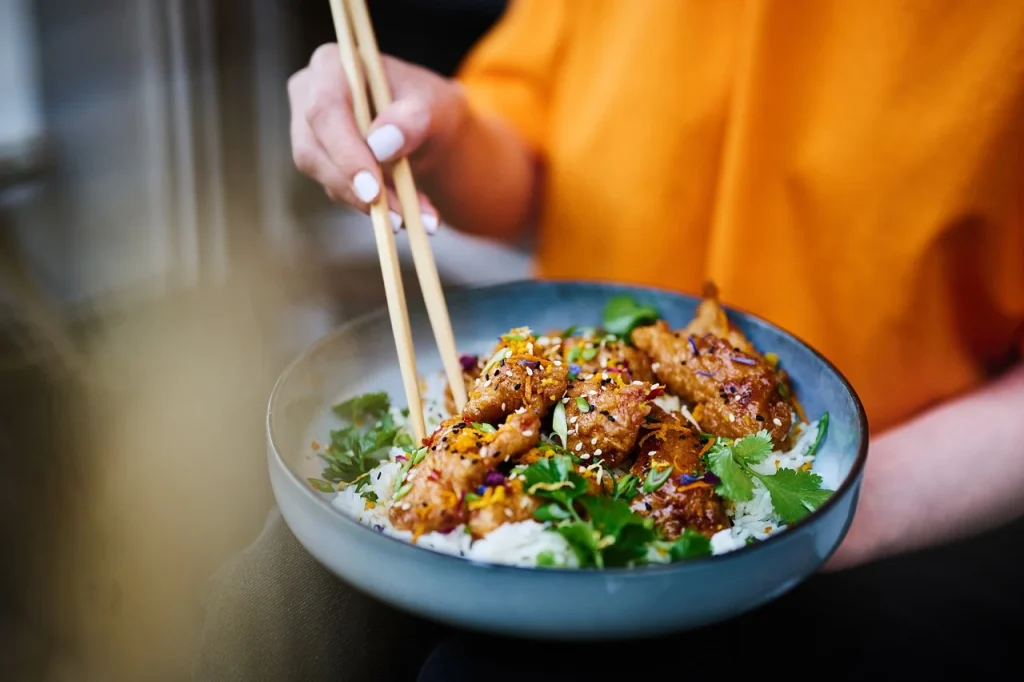In recent years, the world has witnessed growing concerns about environmental Pollaste, food security, and the ethical considerations surrounding traditional animal agriculture. To address these issues, researchers and entrepreneurs are exploring innovative ways to produce protein with a lower ecological footprint. One such development gaining attention is pollaste, a groundbreaking approach to sustainable protein production.
What is Pollaste?
Pollaste is a plant-based protein source that mimics the taste, texture, and nutritional profile of poultry meat, particularly chicken. It is produced using advanced food science techniques, blending plant proteins, fibers, fats, and natural flavors to recreate the sensory experience of eating traditional chicken. As consumers become more health-conscious and environmentally aware, pollaste offers a viable alternative that doesn’t compromise on taste or nutritional value.
The Need for Alternatives
The environmental impact of raising chickens, although smaller compared to beef and pork, is still significant. The global poultry industry contributes to deforestation, water consumption, and greenhouse gas emissions. With the demand for chicken meat expected to rise as the global population grows, finding sustainable protein sources is critical. Furthermore, industrial poultry farming raises concerns about animal welfare, antibiotic resistance, and the spread of zoonotic diseases.
Pollaste aims to address these issues by offering a plant-based alternative that uses significantly fewer resources. According to various studies, producing plant-based proteins like pollaste can reduce water use by up to 90%, land use by 95%, and greenhouse gas emissions by up to 80% compared to traditional chicken farming.
How Pollaste is Made
The production of pollaste involves selecting plant proteins from sources like soy, pea, or chickpea, which are rich in essential amino acids. These proteins are isolated and processed using techniques like extrusion and fermentation to achieve a texture similar to that of poultry. To enhance the flavor, manufacturers use a combination of natural flavors, yeast extracts, and spices. Some brands may also incorporate fats from vegetable oils or algae to replicate the juiciness of chicken meat.
Advanced techniques in molecular gastronomy and food engineering also help recreate the fibrous structure of muscle tissue, giving pollaste the “bite” and chew that consumers expect from chicken. The end result is a product that is not only visually similar to chicken but also performs well in a variety of cooking methods, from grilling to frying.
Health Benefits
Pollaste offers several health benefits compared to traditional chicken. It is typically lower in saturated fat and cholesterol, making it a heart-healthy option. Because it is made from plants, it contains dietary fiber, which is absent in animal-based products. Many versions of pollaste are also fortified with essential vitamins and minerals such as B12, iron, and zinc to ensure they meet the nutritional needs of consumers who may be reducing their intake of animal products.
Moreover, pollaste is free from antibiotics and hormones, which are often used in conventional poultry farming. This makes it an attractive choice for individuals concerned about the overuse of antibiotics in animal agriculture and its potential role in fostering antibiotic-resistant bacteria.
The Market for Pollaste
The global market for plant-based proteins has been growing rapidly, with companies like Beyond Meat, Impossible Foods, and others gaining mainstream recognition. Pollaste represents a new frontier in this space, focusing on consumers who enjoy poultry but are looking for sustainable and ethical alternatives.
As more people adopt flexitarian, vegetarian, or vegan diets, the demand for high-quality, plant-based meat alternatives is expected to rise. Market analysts predict that the plant-based protein industry could be worth over $30 billion by 2030, and pollaste is poised to capture a significant share of that market.
Challenges and Future Prospects
While pollaste has great potential, it is not without challenges. One of the key hurdles is scaling production to meet global demand while keeping prices competitive with traditional chicken. However, as technology advances and economies of scale are achieved, the cost of pollaste is expected to decrease, making it more accessible to a broader consumer base.
Another challenge is consumer acceptance. While the plant-based movement is growing, there is still a significant portion of the population that remains skeptical about alternatives to animal meat. Education, marketing, and sampling campaigns will be crucial in driving consumer interest and trust in pollaste.
Conclusion
Pollaste represents a promising step forward in the quest for sustainable and ethical food production. By offering a plant-based alternative that closely mimics chicken in taste, texture, and nutrition, it provides a viable solution to some of the most pressing challenges in food security and environmental sustainability. As production methods improve and consumer awareness grows, pollaste has the potential to become a staple in diets around the world, contributing to a more sustainable and healthy future.
FAQs
1. What is pollaste made from?
Pollaste is typically made from plant proteins such as soy, pea, or chickpea, combined with natural flavors, fibers, and oils. These ingredients are processed to replicate the texture and taste of chicken, offering a plant-based alternative with similar nutritional benefits.
2. How is pollaste different from traditional chicken?
Pollaste is completely plant-based and contains no animal products, antibiotics, or hormones. It is designed to mimic chicken in taste, texture, and nutritional profile, but it is generally lower in saturated fats and cholesterol. Additionally, it uses fewer natural resources like water and land, making it more environmentally sustainable.
3. Is pollaste healthy?
Yes, pollaste is considered a healthy alternative to traditional chicken. It is typically lower in saturated fat and cholesterol and is free from antibiotics and hormones. Some versions are also fortified with essential vitamins and minerals like B12, iron, and zinc, which are commonly found in animal products.
4. How is pollaste made?
Pollaste is produced by isolating proteins from plants such as soy or peas. These proteins are then processed using techniques like extrusion and fermentation to mimic the texture of poultry. The final product is flavored with natural extracts and spices to resemble the taste of chicken, and fats from vegetable oils are added to replicate the juiciness.
5. Can pollaste be cooked like regular chicken?
Yes, pollaste is designed to be versatile in the kitchen. It can be grilled, fried, baked, or sautéed, just like traditional chicken. It holds up well in a variety of dishes, from salads and sandwiches to stir-fries and tacos.
6. Is pollaste suitable for vegans and vegetarians?
Absolutely! Pollaste is completely plant-based and contains no animal-derived ingredients, making it suitable for vegans, vegetarians, and those who follow a plant-based or flexitarian diet.
7. How does pollaste impact the environment compared to chicken farming?
Pollaste is significantly more sustainable than traditional chicken farming. Producing pollaste uses up to 90% less water, 95% less land, and generates up to 80% fewer greenhouse gas emissions. It also reduces deforestation and the ethical concerns related to animal farming.



